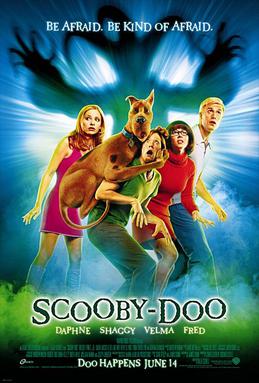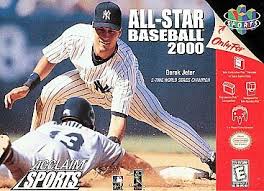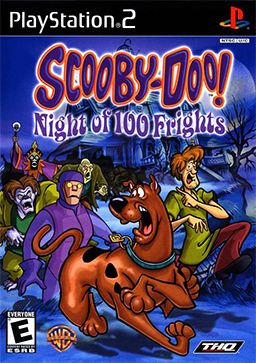
Scooby-Doo is an American media franchise owned by Warner Bros. Entertainment and created in 1969 by writers Joe Ruby and Ken Spears through their animated series, Scooby-Doo, Where Are You!, for Hanna-Barbera. The series features four teenagers: Fred Jones, Daphne Blake, Velma Dinkley, and Shaggy Rogers, and their talking Great Dane named Scooby-Doo, who solve mysteries involving supposedly supernatural creatures through a series of antics and missteps, while traveling using a brightly colored van called the "Mystery Machine". The franchise has several live-action films and shows.

Mario Tennis is a 2000 sports video game developed by Camelot Software Planning and published by Nintendo for the Nintendo 64. Following Mario's Tennis, it is the second game in the Mario Tennis series. The game is known for being the introduction of Luigi's arch-rival, Waluigi, and the re-introduction of Princess Daisy and Birdo.

Donald Duck: Goin' Quackers is a platform video game developed and published by Ubi Soft for various consoles and Windows-based personal computers. A version with the same title was first released for the Game Boy Color, as well as on Game Boy Advance, the latter being given the title Donald Duck Advance.

Daphne Blake is a fictional character in the Scooby-Doo franchise. Daphne, depicted as coming from a wealthy family, is noted for her beauty, red hair, purple heels, fashion sense, and her knack for getting into danger, hence the nickname "Danger-Prone Daphne".

Velma Dinkley is a fictional character in the Scooby-Doo franchise. She is usually seen wearing a baggy orange turtleneck sweater, a short red pleated skirt, knee high socks, Mary Jane shoes, and a pair of black square glasses, which she frequently loses and is unable to see without. She is seen as the "brains" of the group.

Cruis'n Exotica is a 1999 racing game developed for arcades by Midway Games. The game is a sequel to Cruis'n World and is the third entry in the Cruis'n series.

The Transfer Pak is a removable accessory for the Nintendo 64 controller that fits into its expansion port. When connected, it allows for the transfer of data between supported Nintendo 64 (N64) games and Game Boy or Game Boy Color (GBC) games. By using the Transfer Pak, players can unlock additional content in compatible games; the Pokémon Stadium games, with which the Transfer Pak was initially bundled for sale, also feature the ability to emulate specific Game Boy Pokémon titles for play on the N64.

Scooby-Doo is a 2002 American fantasy adventure comedy film produced by Mosaic Media Group and based on the long-running animated franchise of the same name. The first installment in the Scooby-Doo live-action film series, the film was directed by Raja Gosnell from a screenplay by James Gunn, and stars Freddie Prinze Jr., Sarah Michelle Gellar, Matthew Lillard, Linda Cardellini and Rowan Atkinson. Neil Fanning provides the voice of the titular character. The plot revolves around Mystery Incorporated, a group of four young adults and a talking dog who solve mysteries, who reunite after a two-year disbandment to investigate a mystery at a popular horror-themed tropical island resort.

Madden NFL 2000 is a football video game. This was the second of the Madden NFL games to not solely feature John Madden on the cover in North America. The only other one was Madden NFL '95. Most versions of the game cover featured Madden prominently in the foreground, and a recognizable Barry Sanders in a background action graphic. The European PAL edition features only Dorsey Levens on the cover.

All-Star Baseball 2001 is a video game developed by High Voltage Software and KnowWonder and published by Acclaim Entertainment for the Game Boy Color and the Nintendo 64 in 2000.

All-Star Baseball 2000 is a video game developed by Iguana Entertainment and Realtime Associates and published by Acclaim Entertainment for the Game Boy Color and the Nintendo 64 in 1999.

BattleTanx is a 1998 action game released for the Nintendo 64, produced by The 3DO Company. The game was followed by a 1999 sequel, titled BattleTanx: Global Assault.

Mickey's Speedway USA is a Disney racing game for the Nintendo 64 and Game Boy Color, developed by Rareware and published by Nintendo under license from Disney Interactive. It is styled after other kart racers such as Mario Kart 64 and Diddy Kong Racing, and features characters from the Mickey Mouse universe racing across the United States. It is Rare and Nintendo's second Disney-themed racing game following Mickey's Racing Adventure (1999).

Scooby-Doo! Unmasked is a platform game based on the Scooby-Doo franchise. It was developed by Artificial Mind and Movement and published by THQ for the Xbox, PlayStation 2, GameCube, Game Boy Advance, and Nintendo DS.

Scooby-Doo! Night of 100 Frights is a 2.5D platform game developed by Heavy Iron Studios and published by THQ for the PlayStation 2, GameCube, and Xbox. The game was released on May 22, 2002, in North America and was released later that year in PAL regions. It was the first Scooby-Doo! video game on sixth-generation consoles. The PlayStation 2 version became a Greatest Hits title in May 2003. The game has a follow-up titled Scooby-Doo! Mystery Mayhem.

Magical Tetris Challenge is a puzzle game by Capcom for the Nintendo 64, Game Boy Color, and PlayStation. It is a version of Tetris featuring Disney characters. It is one of the few Nintendo 64 games to be entirely in 2D, in addition to being Capcom's first game for the console.

NBA Jam 99 is a basketball game for the Nintendo 64 and Game Boy Color, released in 1998 by Acclaim Entertainment's Acclaim Sports label and developed by Iguana West. New Jersey Nets forward Keith Van Horn appeared on the cover. Acclaim was unable to secure the license to use Michael Jordan's name or likeness, and as such he was not available as a player for the Chicago Bulls. A player named Roster Guard is available in his place. Rosters are accurate as of July 1, 1998. The game also features Kevin Harlan on play-by-play with Bill Walton as the color commentator. The Utah Jazz' Dan Roberts provides the arena announcing.

Polaris SnoCross is a snocross snowmobile racing game for Game Boy Color, PlayStation, Nintendo 64, and later Microsoft Windows. It was released in 2000. French publisher Wanadoo Edition released a budget version of the game for the PC in 2001, called SnowCross.

Scooby-Doo! First Frights is a platform video game developed by Torus Games and published by Warner Bros. Interactive Entertainment. The game released alongside the DVD release of Scooby-Doo! The Mystery Begins. The game features Scott Innes as Shaggy, and the other three main voice-cast members returning from What's New Scooby Doo? This is the fourth Scooby-Doo video game to use a laugh track. A successor to the game, Scooby-Doo and the Spooky Swamp, was released in 2010.

Scooby-Doo and the Cyber Chase is a Scooby-Doo video game based on the Warner Brothers film Scooby-Doo and the Cyber Chase. The game was released for the PlayStation and Game Boy Advance in 2001. The PlayStation version became a "Greatest Hits" title in 2003.



















